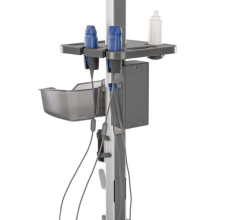
February 2, 2017 — Lantheus Medical Imaging Inc. announced U.S. Food and Drug Administration (FDA) approval of a label update for Definity Vial for (Perflutren Lipid Microsphere) Injectable Suspension. The update removes the contraindication statement related to use in patients with a known or suspected cardiac shunt from the U.S. Prescribing Information.
Definity is indicated for use in patients with suboptimal echocardiograms to opacify the left ventricular chamber and to improve the delineation of the left ventricular endocardial border.
A cardiac shunt is a pattern of blood flow in the heart that deviates from the normal path of the circulatory system, which may present in 10 to 35 percent of patients. These patients were previously excluded from receiving a valuable echo contrast study of the left ventricle. The FDA’s decision to remove the contraindication concerning known or suspected cardiac shunts was based on Lantheus’ submission referencing several publications and data supporting the safety of echocardiography contrast products in patients with cardiac shunts. Information concerning administration in patients with a cardiac shunt appears in the Warnings section of the Definity Prescribing Information.
Neil Weissman, M.D., president of MedStar Health Research Institute (Washington, D.C.), professor of medicine at Georgetown University and past president of the American Society of Echocardiography commented, “The echocardiography medical and scientific community has long demonstrated the safety of echocardiographic contrast agents through published clinical studies which has supported the removal of the contraindication for Definity in patients with cardiac shunts. This is particularly noteworthy as Definity is the most widely used echocardiography agent in the U.S. with published data supporting its safety profile across multiple care settings and across gender and race in adults, including those age 65 and older.”
Weissman continued, “This is an important step toward broader acceptance and appropriate use of echo contrast agents, which can safely and cost effectively provide critical information to help clinicians accurately diagnose and manage patients to achieve better outcomes.”
Up to 20 percent of all resting echocardiography studies and up to 30 percent of those conducted in critical care patients can result in suboptimal echocardiograms. A suboptimal image is one in which two or more contiguous left ventricular segments in any of the three apical views cannot be visualized. The use of contrast in suboptimal echocardiograms may help with clinical evaluation of the patient.
For more information: www.lantheus.com


 May 30, 2024
May 30, 2024 








